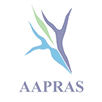Consultation about revision rhinoplasty in Yerevan, Armenia
The consultation process begins with a discussion about the specific issues and concerns regarding the appearance of the nose. Sometimes, patients with prior nasal surgeries may experience serious nasal obstruction, due to an aggressive removal of cartilage. This should also be debated as this can be fixed during the revision rhinoplasty.
A thorough physical examination is then performed. Nasal cavities are examined. The septum is examined for any deviations and any inflammation or swelling of the turbinates is noted. The septum is palpated to determine whether any cartilage is present. Patient is asked to breathe through the nose to observe external and internal nasal valves. Any detected collapse will be addressed in the surgery to make the breathing better.
The external nose is then attentively examined and palpated. The dorsum, or bridge of the nose, is examined for any humps that may have to be lessen. The nasal bones are then palpated for irregularities, asymmetries, or curvatures. The nasal tip is then examined and palpated. Occasionally, the tip cartilages are asymmetric, or pointing in different directions. The tip may have alar collapse or the ala may be retracted. The collumela is examined to see if there is any hanging or. The tip projection, which is the length of the tip from the base of the nose to the end of the tip, is examined. Tips that are too protrude, or long, need to be lessen and those that are to short, may need to be lengthened. Tip rotation, which is the angle of the tip in relation to an imaginary vertical line drawn at the base of the nose, is analyzed. Tips that are under-rotated, or "droopy" need to be rotated up, while tips that are and appear "piggy" need to be de-rotated or brought down. Some nasal tips that move when the patient talks or smiles may require strengthening.








